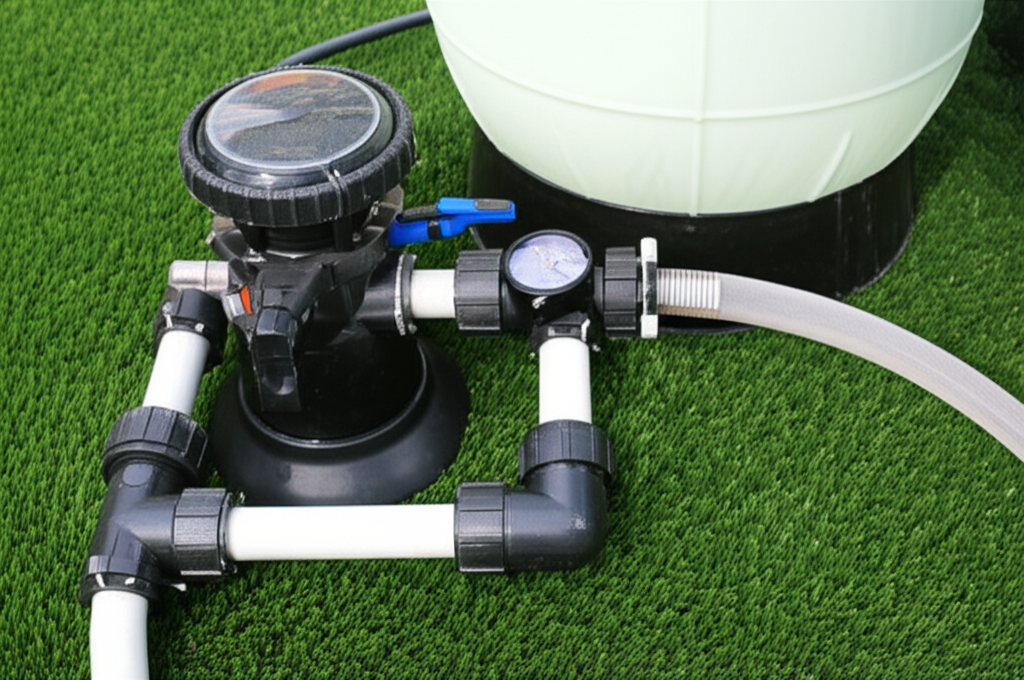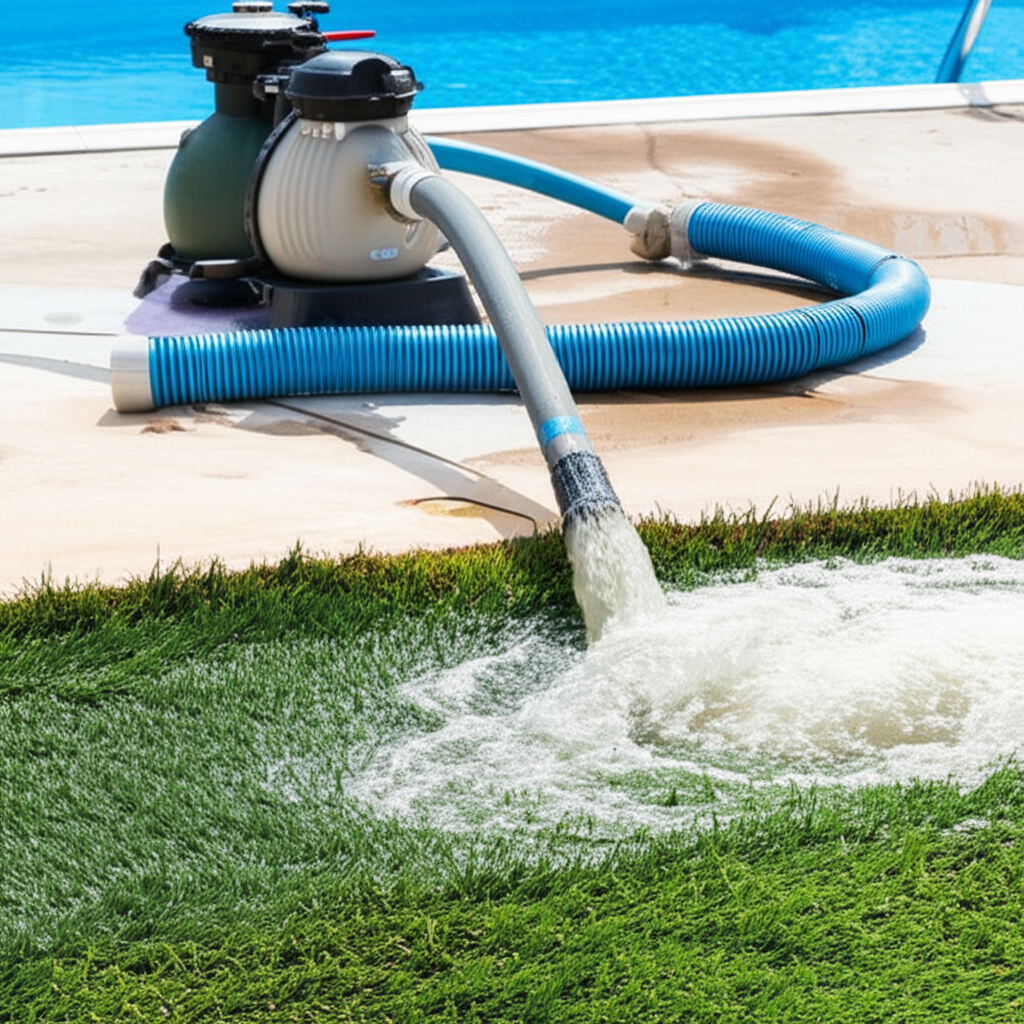- Why Pool Backwashing is Crucial for Filter Maintenance
- Understanding Your Filter Type and the Backwash Process
- The Step-by-Step Guide to Effective Pool Backwashing
- When to Backwash Your Pool Filter
- Beyond Backwashing: Holistic Filter Maintenance
Pool Backwashing is an indispensable process for maintaining a sparkling clean and healthy swimming pool. Often misunderstood or overlooked, this simple yet crucial task ensures your filter system operates at peak efficiency, preventing cloudy water, algae growth, and unnecessary strain on your pool equipment. Far from being a complex chore, proper backwashing can be an effortless part of your regular pool maintenance routine, directly contributing to extended filter life and pristine swimming conditions.
Why Pool Backwashing is Crucial for Filter Maintenance
Your pool filter is the unsung hero of your water quality, tirelessly removing dirt, debris, and microscopic impurities. Over time, as your filter traps more and more contaminants, its efficiency decreases. This accumulation of trapped particles leads to increased pressure within the filter tank. When the pressure gets too high, the water flow diminishes, the pump works harder, and the filter can no longer effectively clean your pool water. This is where backwashing comes in. It’s essentially a reverse flow of water through the filter, dislodging and flushing out the trapped debris, restoring the filter’s capacity and bringing the pressure back down to optimal levels. Without regular backwashing, you risk:
Cloudy Water: An clogged filter can’t remove new impurities, leading to a hazy pool.
Algae Blooms: Impurities provide a food source for algae.
Reduced Circulation: Poor water flow affects chemical distribution and overall cleanliness.
Pump Strain: Your pump works harder to push water through a clogged filter, increasing wear and tear and energy consumption.
Damaged Filter Media: Excessive pressure can damage the sand or DE grids inside your filter.
Understanding Your Filter Type and the Backwash Process
Before you begin pool backwashing, it’s important to know what type of filter your pool has, as the specifics of the process vary slightly. The two primary types of filters that require backwashing are:
Sand Filters: These are the most common and robust. They use a bed of specialized sand to trap particles. Backwashing reverses water flow through the sand, lifting the trapped dirt and sending it out through a waste line.
Diatomaceous Earth (DE) Filters: Known for their superior filtration capabilities, DE filters use grids coated with a fine powder made from fossilized diatoms. Backwashing here flushes the dirty DE powder off the grids, necessitating the addition of fresh DE powder after the process.
Note: Cartridge filters do not backwash. They require periodic manual removal and rinsing or soaking of the cartridges.
The Step-by-Step Guide to Effective Pool Backwashing
While specific instructions may vary slightly by model, the general procedure for pool backwashing is straightforward:
1. Turn Off the Pump: Always start by turning off your pool pump before manipulating any valves. This prevents damage to the pump and filter.
2. Prepare the Waste Line: Ensure your backwash hose is securely attached to the waste port on your filter’s multiport valve or push-pull valve and directed to an appropriate drainage area (e.g., a lawn, public sewer, or designated waste disposal point). Adhere to local regulations regarding wastewater disposal.
3. Select “Backwash”:
For Multiport Valves: Push down on the handle, rotate it to the “Backwash” position, then release.
For Push-Pull (Slide) Valves: Pull the handle up to the “Backwash” position.
4. Turn On the Pump: Briefly turn the pump back on.
5. Monitor the Sight Glass: Watch the clear sight glass (usually on the multiport valve) or the backwash hose. Initially, you’ll see cloudy, dirty water. Let the backwash run until the water in the sight glass is completely clear, typically 1-3 minutes.
6. Turn Off the Pump: Once the water runs clear, turn off the pump again.
7. Select “Rinse” (for Sand Filters): If you have a sand filter, move the multiport valve handle to the “Rinse” position (or push the handle down on a push-pull valve to reset it slightly). Turn the pump on for 30-60 seconds to settle the sand bed. Some DE filters also have a rinse cycle.
8. Turn Off the Pump: Turn off the pump after rinsing.
9. Return to “Filter”: Move the multiport valve handle back to the “Filter” position (or push the handle fully down on a push-pull valve).
10. Turn On the Pump: Turn the pump back on, and your filter is now ready for normal operation.
11. Replenish DE (for DE Filters): If you have a DE filter, measure the appropriate amount of DE powder according to your filter size (usually specified in your manual) and slowly pour it into the skimmer. The pump will draw the DE into the filter, coating the grids. Wait about 30 seconds for the DE to clear the skimmer before turning off the pump to ensure all DE is drawn into the filter system.
12. Check Pressure: Note the new, lower pressure gauge reading. This is your “clean start” pressure.
When to Backwash Your Pool Filter
Knowing when to backwash is as important as knowing how. The general rule of thumb is to backwash when your filter’s pressure gauge reads 8-10 PSI (pounds per square inch) higher than its normal “clean” operating pressure.
Other indicators include:
Visible Cloudy Water: If your pool begins to look hazy despite proper chemical balance.
Reduced Water Flow: You might notice weaker skimmer suction or less vigorous returns.
Routine Schedule: Many pool owners backwash every week or two, especially during heavy use periods or after a storm.
After Vacuuming Algae: If you’ve had an algae outbreak, backwashing after vacuuming to waste (if possible) is crucial to remove dead algae spores from the system.
Beyond Backwashing: Holistic Filter Maintenance
While pool backwashing is a cornerstone of filter care, remember that it’s part of a larger maintenance ecosystem. For truly effortless filter maintenance and sparkling water, consider these additional tips:
Regular Skimming and Vacuuming: Reduce the load on your filter by manually removing debris from the surface and bottom of the pool.
Maintain Chemical Balance: Properly balanced water prevents scale buildup and prolongs the life of your filter media.
Clean Pump and Skimmer Baskets: Empty these regularly to ensure optimal water flow to the filter.
Periodic Deep Cleaning: Every few seasons, consider chemically cleaning your sand filter media or having your DE grids professionally cleaned or replaced.
* Monitor Your Pressure Gauge: Get into the habit of checking it regularly.
Embracing regular pool backwashing is an investment in your pool’s longevity and your enjoyment. By following these simple steps, you can ensure your filter continues to perform its vital function, providing you with crystal-clear, inviting water all season long. It’s a small task that yields significant rewards, making filter maintenance truly effortless.




